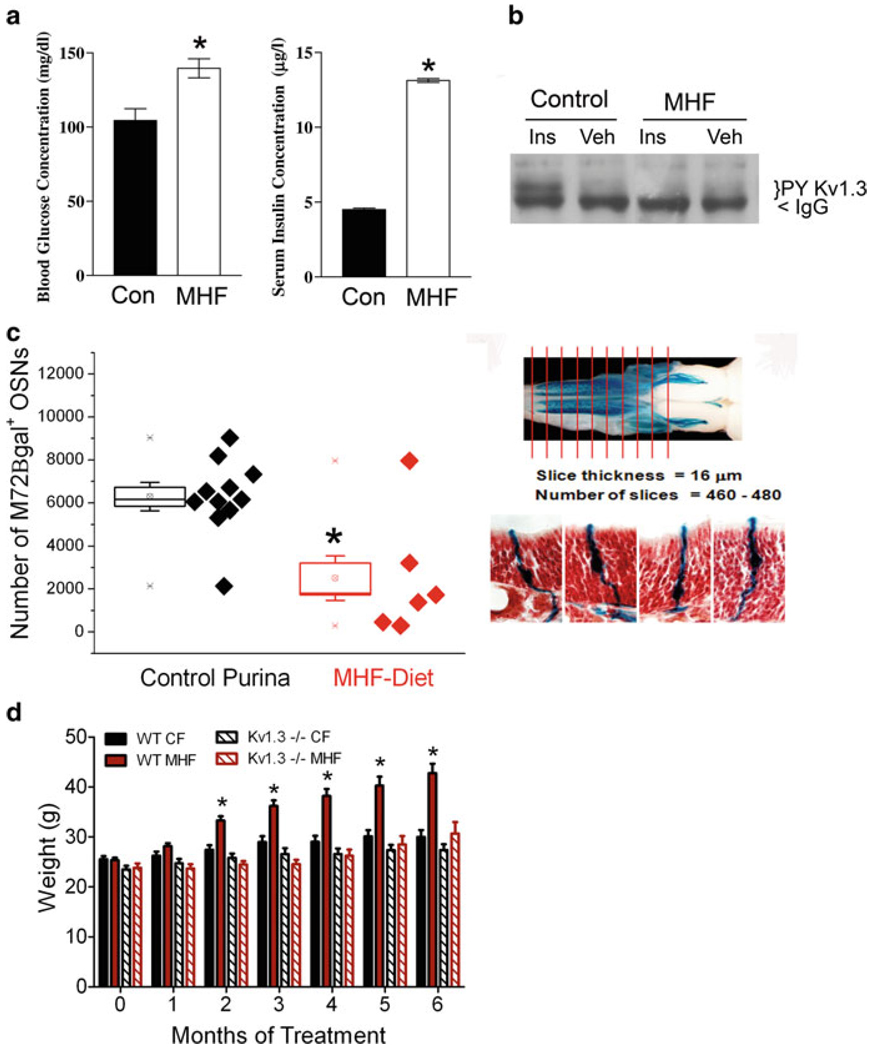Fig. 2.
Mice maintained on a moderately high-fat (MHF) diet develop a prediabetic blood chemistry, resistance to Kv1.3 channel phosphorylation, and a loss of an OR-identified class of olfactory sensory neurons. Mice with a gene-targeted loss of Kv1.3 ion channel are resistant to obesity. (a) Bar graph of blood glucose and serum insulin concentrations for six wild-type mice maintained for 52 weeks on a control Purina chow (Con) or 32% fat diet (MHF). (b) Same cohort of mice in which mice were intranasally administered saline vehicle (Veh) or 0.1 µg/ml insulin twice daily for 8 days. Proteins were immunoprecipitated with an antibody directed against Kv1.3 protein, separated by SDS-PAGE, and then probed with an antibody that recognizes tyrosine specific phosphorylation (PY Kv1.3). IgG = immunoglobulin band. (c) Combined scatter (each mouse) and box plot (population mean and s.e.m.) of the number of M72 B-galactosidase positive neurons in the epithelia of mice maintained on different dietary regimes. Same experimental diet paradigm was performed (as in a and b) on mice with a genetic marker for the M72 odorant receptor, M72irestauLacZ. Each whole epithelia were sectioned in entirety and then processed for β-galactosidase product to identify M72 expressing olfactory sensory neurons (OSNs). Neutral red was utilized as a counterstain (right) to better resolve OSNs in context. (d) Bar graph of the mean body weight ± s.e.m. of wild-type (WT) or Kv1.3-null (Kv1.3−/−) mice maintained for 26 weeks on either the control Purina chow (CF) or 32% fat diet (MHF) (a and b). Reproduced with permission from Marks et al. (2009). (c) Whole-mount photograph modified with permission from Biju et al. (2008)

